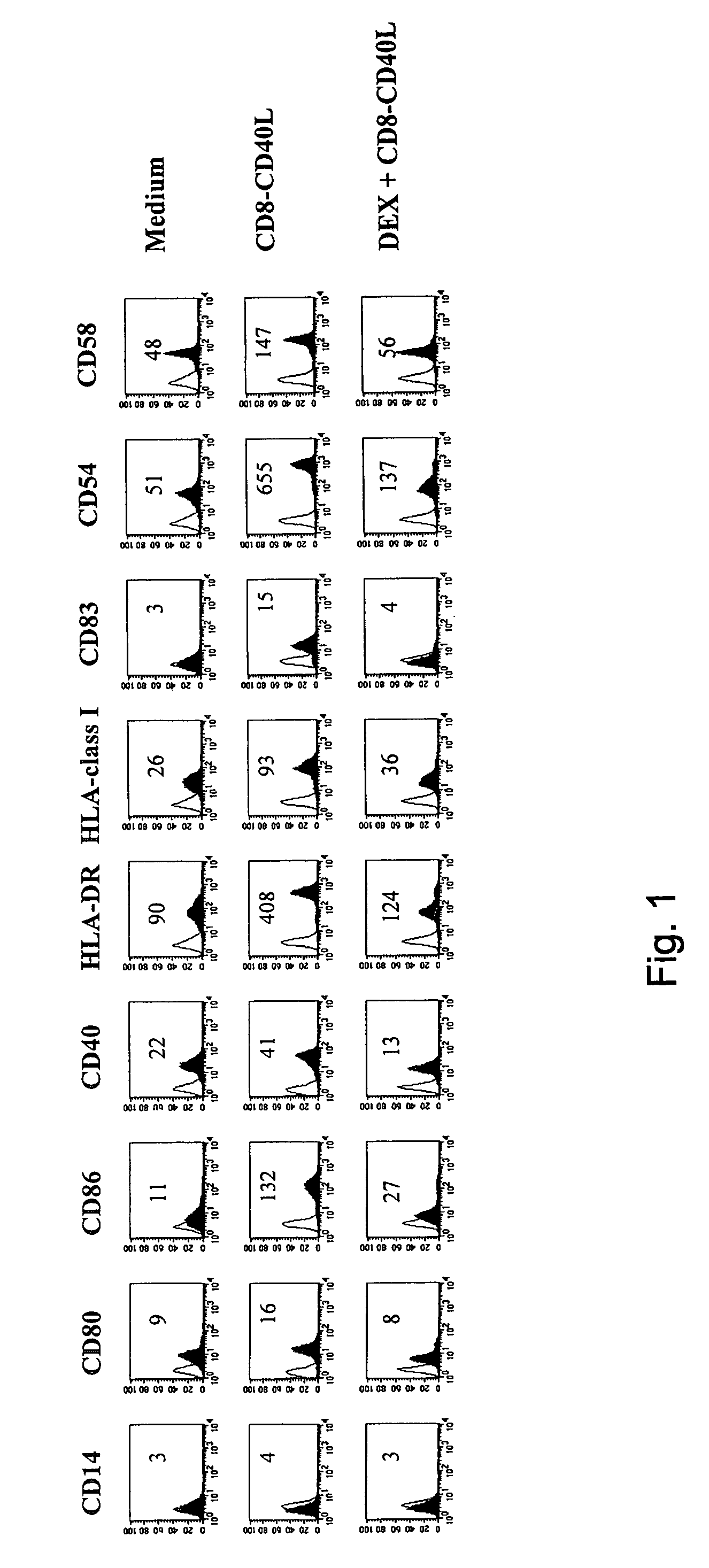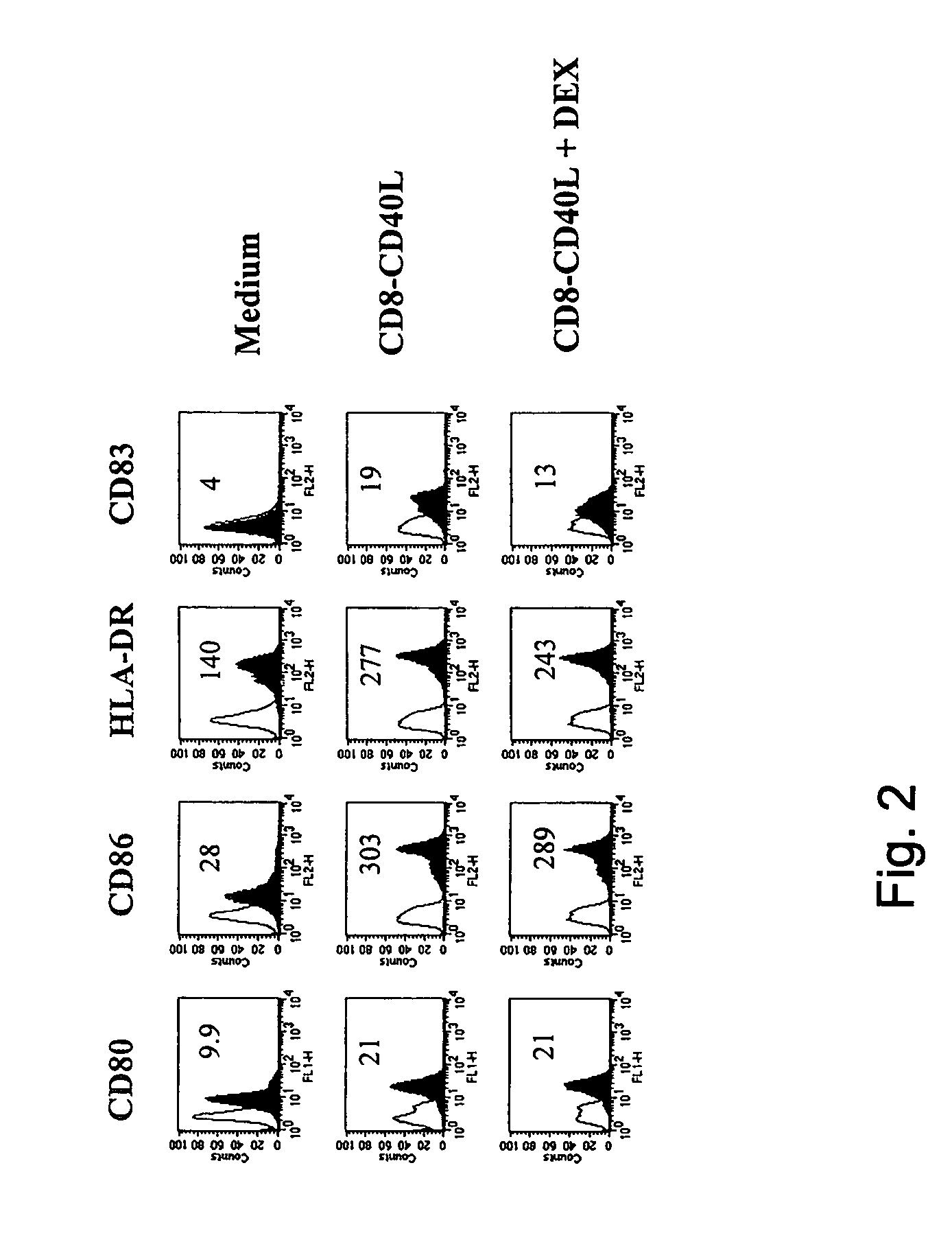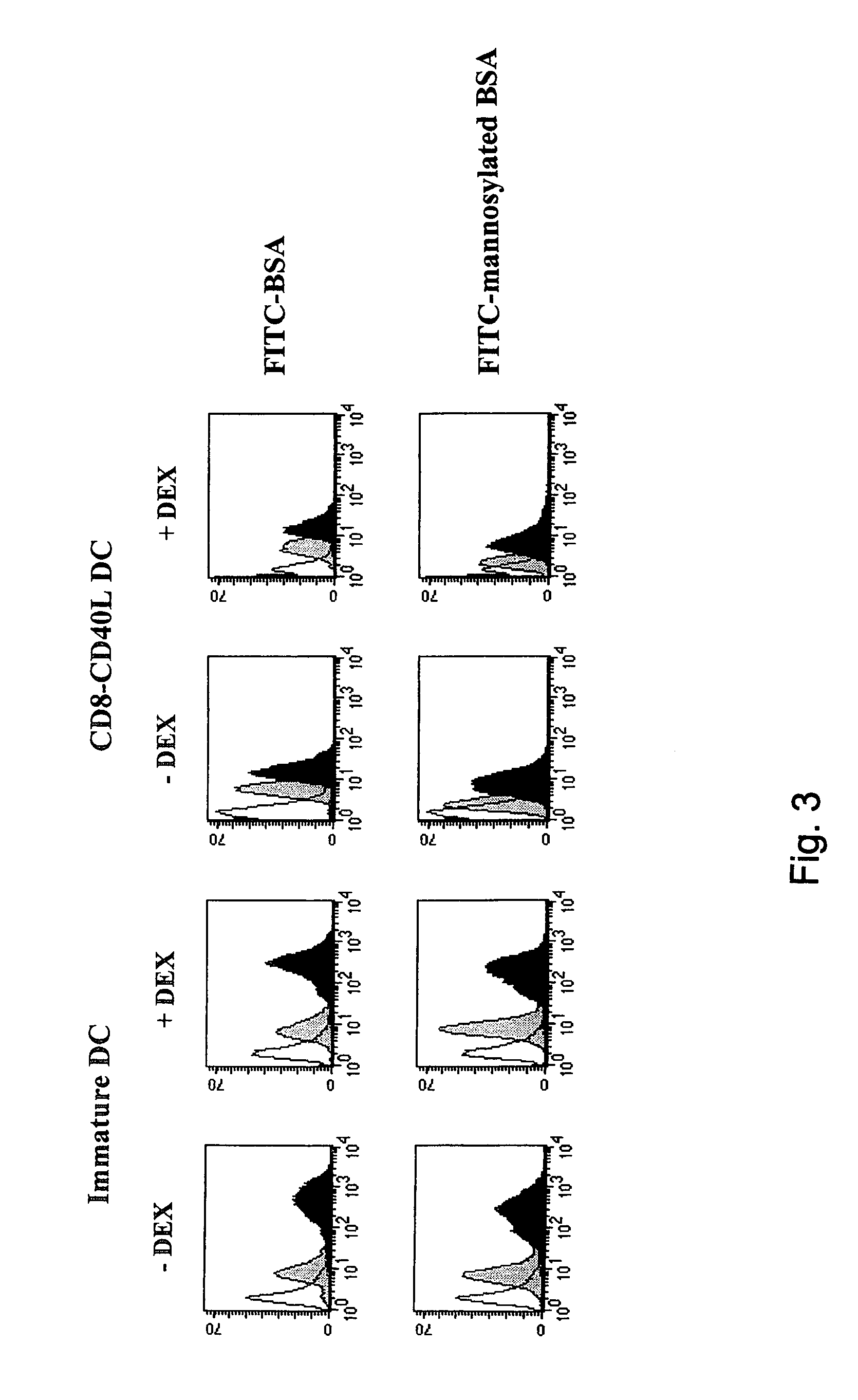Dendritic cells activated in the presence of glucocorticoid hormones are capable of suppressing antigen-specific T cell responses
a technology of glucocorticoid and dendritic cells, applied in the field of medicine, can solve the problems of suppressing pathogenic t-cell responses, causing general immunosuppression, metabolic and endocrine side effects, etc., and reducing the stimulatory potential of t-cells, preventing the differentiation of dc, and high expression of costimulatory and mhc molecules
- Summary
- Abstract
- Description
- Claims
- Application Information
AI Technical Summary
Benefits of technology
Problems solved by technology
Method used
Image
Examples
example 1
Impairment of CD40-CD40L-Mediated Phenotypic Changes by DEX
[0030]We explored the impact of DEX on the phenotypic changes induced by CD40 ligation on immature monocyte-derived DC. In the absence of DEX the fusion protein CD8-CD40L induced a strong upregulation of the costimulatory molecules CD80, CD86 and CD40, of the MHC class I and II molecules, of the adhesion markers CD54 and CD58 and of the DC maturation marker CD83 (FIG. 1). In the presence of DEX, these CD8-CD40L-induced phenotypic changes were dramatically impaired: the upregulation of CD80, CD86, CD40, CD54, CD58 and of the MHC class I and II molecules was largely inhibited and CD83 was not expressed (FIG. 1). Importantly, DEX-treated DC did not revert to a monocyte / macrophage stage as shown by the lack of expression of CD14 (FIG. 1). Titration of DEX showed a complete inhibition of CD40-mediated phenotypic changes at 10−6 M and 10−7 M, a partial blockade at 10−8 M and no effect at 10−9 M and 10−10 (data not shown). In addit...
example 2
DEX Does Not Interfere with the Regulation of DC Antigen Uptake Machinery
[0033]Unlike activated DC, immature DC efficiently internalize antigens through macropinocytosis and mannose receptor-mediated endocytosis (2, 3, 25, 26). We analyzed whether DEX could affect the DC antigen capture machinery and its downregulation following CD40 cross-linking. As shown in FIG. 3, incorporation of FITC-BSA and FITC-mannosylated BSA by immature DC and by DEX-treated immature DC was comparable. Upon CD40 triggering, a similar decrease of FITC-BSA and FITC-mannosylated BSA uptake by both DEX-treated and untreated DC was observed (FIG. 3). These results were the first to indicate to us that DEX does not block all aspects of DC activation, since it does not interfere with the down-regulation of the DC antigen capture machinery.
example 3
DEX-Treated CD40-Triggered DC Secrete IL-10 Instead of IL-12
[0034]A key feature of CD40-triggered DC for initiating T-cell immunity resides in their ability to produce the proinflammatory cytokine IL-12 (5, 6, 27). We investigated whether DEX affected IL-12 production by DC stimulated through CD40, and we explored the possibility that DEX could promote the secretion of the anti-inflamatory cytokine IL-10. As shown in FIG. 4, CD40 triggering of DC strongly induced IL-12p40 and IL-12p70 secretion (up to 120 ng / ml and 170 pg / ml, respectively) but only poorly stimulated the production of IL-10 (up to 68 pg / ml). In contrast, CD40 triggering of DEX-treated DC resulted in a dramatically reduced IL-12p40 production (up to 100 fold) and in the complete suppression of IL-12p70 secretion, whereas IL-10 production was strongly enhanced (up to 50 fold) (FIG. 4). Immature DC and their DEX-treated counterparts failed to secrete detectable amounts of IL-12 and IL-10 (FIG. 4). Therefore, CD40 ligati...
PUM
| Property | Measurement | Unit |
|---|---|---|
| Immunogenicity | aaaaa | aaaaa |
| Antigenicity | aaaaa | aaaaa |
Abstract
Description
Claims
Application Information
 Login to View More
Login to View More - R&D
- Intellectual Property
- Life Sciences
- Materials
- Tech Scout
- Unparalleled Data Quality
- Higher Quality Content
- 60% Fewer Hallucinations
Browse by: Latest US Patents, China's latest patents, Technical Efficacy Thesaurus, Application Domain, Technology Topic, Popular Technical Reports.
© 2025 PatSnap. All rights reserved.Legal|Privacy policy|Modern Slavery Act Transparency Statement|Sitemap|About US| Contact US: help@patsnap.com



